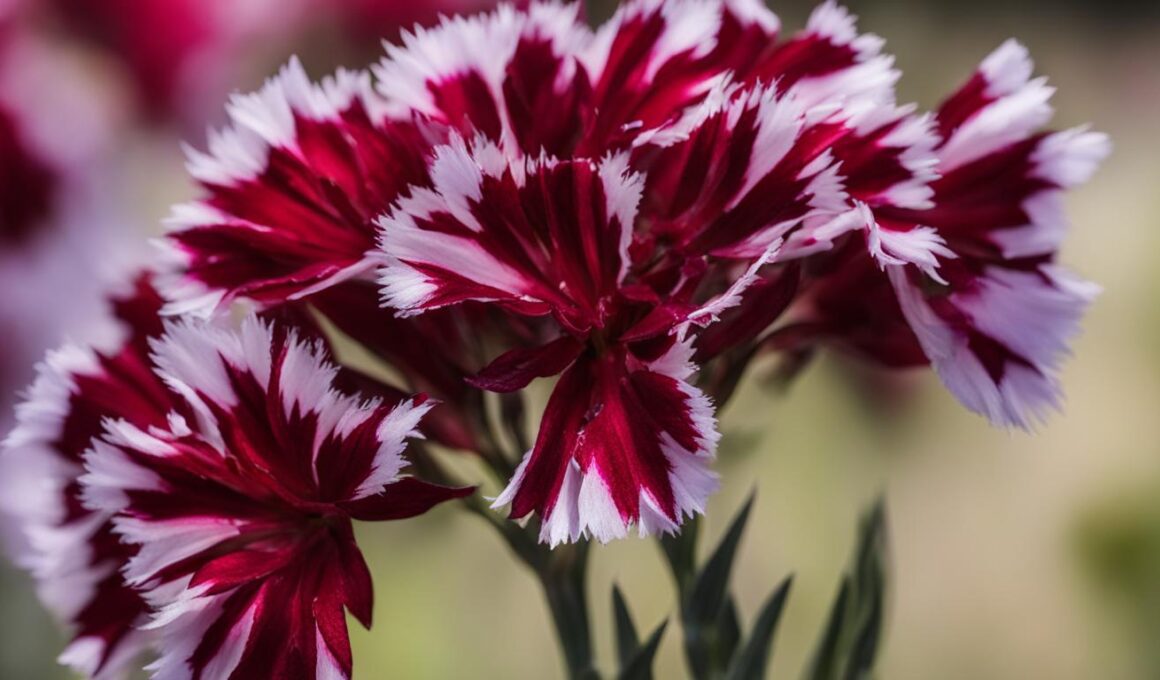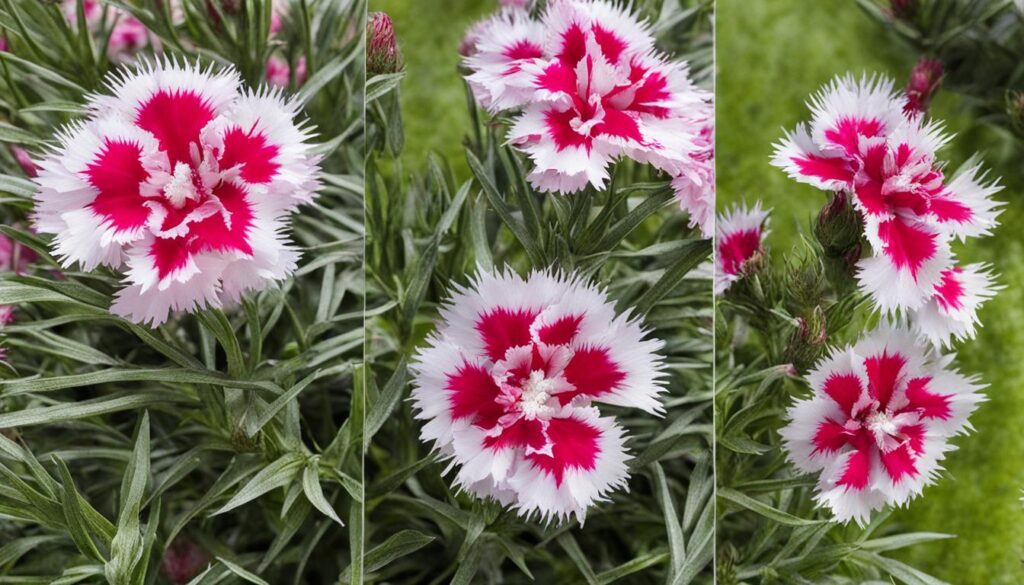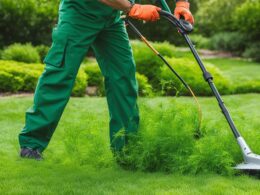Welcome to our gardening guide on deadheading dianthus! If you want your dianthus to keep blooming beautifully, deadheading is a must. Dianthus, also known as pinks, are delightful garden flowers that fill the air with a lovely clove scent. By deadheading your dianthus, you not only keep the plant looking neat and tidy, but you also encourage more blooms to emerge.
Deadheading is the process of removing spent flowers to prevent seed production and promote reblooming. It’s a straightforward task that can be done using simple tools like scissors or small snips. When deadheading, make sure to trim the flower stems back to the mound of foliage where new branches are emerging. This helps redirect the plant’s energy towards producing new blooms instead of seed production.
For larger dianthus beds, you can use a small hedge shear to speed up the deadheading process. If you’re looking for an even easier and more efficient way to deadhead, consider using battery-powered handheld shears with a grass shear blade. These convenient tools make deadheading a breeze, allowing you to maintain the health and appearance of your dianthus with minimal effort.
Regular deadheading, along with removing any dead or damaged foliage, is essential for keeping your dianthus healthy and vibrant. It’s a maintenance task that ensures your dianthus plants continue to bloom throughout the season, adding beauty and color to your garden.
Stay tuned for our next sections where we’ll dive into more details about when and how to deadhead dianthus, as well as some helpful tips to enhance your deadheading experience.
When and How to Deadhead Dianthus
Dianthus, also known as pinks, offer a beautiful display of blooms from spring to fall. To ensure their continuous blooming and maintain a tidy appearance, it’s important to deadhead dianthus at the right time and in the proper way.
When the flower petals of dianthus start to fade and wilt, it’s a clear sign that deadheading should begin. Removing these spent flowers not only keeps the plant looking neat but also encourages new growth and more blooms. Regular inspection of the plant is essential, so keep an eye out for fading flowers.
To deadhead dianthus, you’ll need to remove the entire stem, not just the flower head. This prevents the plant from becoming leggy and redirects its energy towards producing new blooms instead of seed production. Simply snip off the stem at the base, close to the mound of foliage where new branches are emerging.
Deadheading also helps maintain the health and appearance of dianthus plants. It’s an essential practice recommended by gardening experts to ensure prolific blooming. Alongside deadheading, watering and feeding should be regular parts of your dianthus care routine.
In terms of watering, dianthus plants prefer a moderate and consistent level of moisture. Water them deeply once a week, ensuring the soil drains well to prevent waterlogging. During hot and dry spells, you may need to water more frequently. As for feeding, a balanced fertilizer can be applied every 4-6 weeks during the growing season to provide the necessary nutrients for healthy growth and abundant flowering.
By deadheading regularly, watering appropriately, and feeding adequately, you’ll promote lush growth, vibrant blooms, and enjoy a stunning dianthus display throughout the season.
Tips for Deadheading Dianthus
Dianthus plants thrive in full sun, so it’s essential to provide them with ample sunlight to ensure optimal blooming. If you want your dianthus to produce abundant and vibrant flowers, make sure they receive at least six hours of direct sunlight each day. Placing them in a sunny spot in your garden or on a sunny windowsill is ideal.
When deadheading dianthus, it is important to sterilize your shears before each use to prevent the spread of diseases. Dip the blades of your shears in rubbing alcohol and let them sit for a few minutes to kill any potential pathogens. This simple step can help keep your plants healthy and thriving.
To deadhead dianthus, you have a couple of options. You can either pinch off the spent flower blooms using your fingers or use shears or scissors to cut the stem down to the nearest set of leaves. Removing the entire flower stem, rather than just the blossom, ensures a neater appearance and encourages the growth of new flowers. By regularly monitoring your dianthus and deadheading throughout the summer, you can maintain a tidy and blooming garden.
Pruning your dianthus plants can help maintain their shape, promote healthier branching, and control their growth. If you notice any overgrown or leggy stems, you can trim them back near the leaf buds. This will encourage new growth and result in a more compact and attractive plant.
Additionally, don’t forget that dianthus flowers can be enjoyed in floral arrangements. To ensure longevity, cut the flowers for arrangements before they start to look sad. This way, you can bring the beauty and delicate fragrance of dianthus indoors.
Can Deadheading Dianthus Help Improve Overall Plant Health Like Planting Papaya Seeds?
Deadheading Dianthus can help improve overall plant health similarly to planting papaya seeds effectively. By removing spent blooms, the plant can redirect its energy into producing new growth and flowers. This practice can also help prevent disease and promote a healthier, more vibrant plant.










